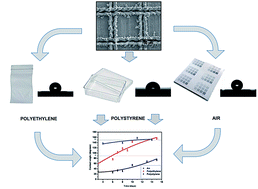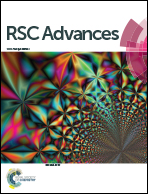Influence of ambient conditions on the evolution of wettability properties of an IR-, ns-laser textured aluminium alloy
Abstract
Micro cell structures of different sizes were patterned using a nanosecond near-infrared laser source on Al2024 aluminium alloy plates with 2 mm thickness. The influence of laser parameters on the shape and size of the produced patterns were studied together with the evolution of wettability properties over time for different storage conditions. Samples were found to be superhydrophobic from a single step laser patterning, requiring no further treatment. Exposure to ambient air was shown to be a key factor in the property changes of the samples over time. The produced surface patterns with different laser parameter settings were correlated with the contact angle measurements, revealing a great influence of the amount of recast material on the hydrophobic properties. X-Ray photoelectron spectroscopy was used to study the impact of surface chemistry changes on hydrophobicity, analysis of elemental composition proved that chemisorbed organic molecules present in the ambient air were responsible for the hydrophilic to superhydrophobic transition.



 Please wait while we load your content...
Please wait while we load your content...